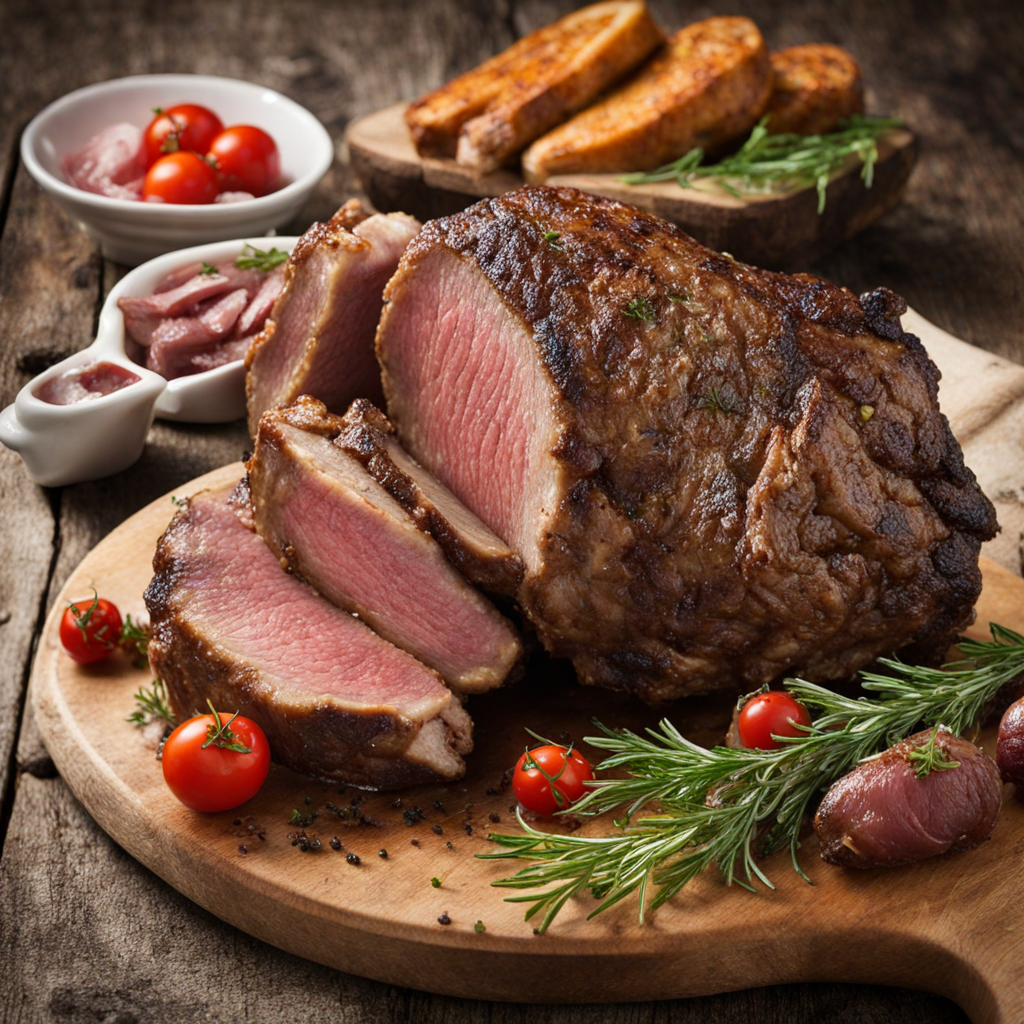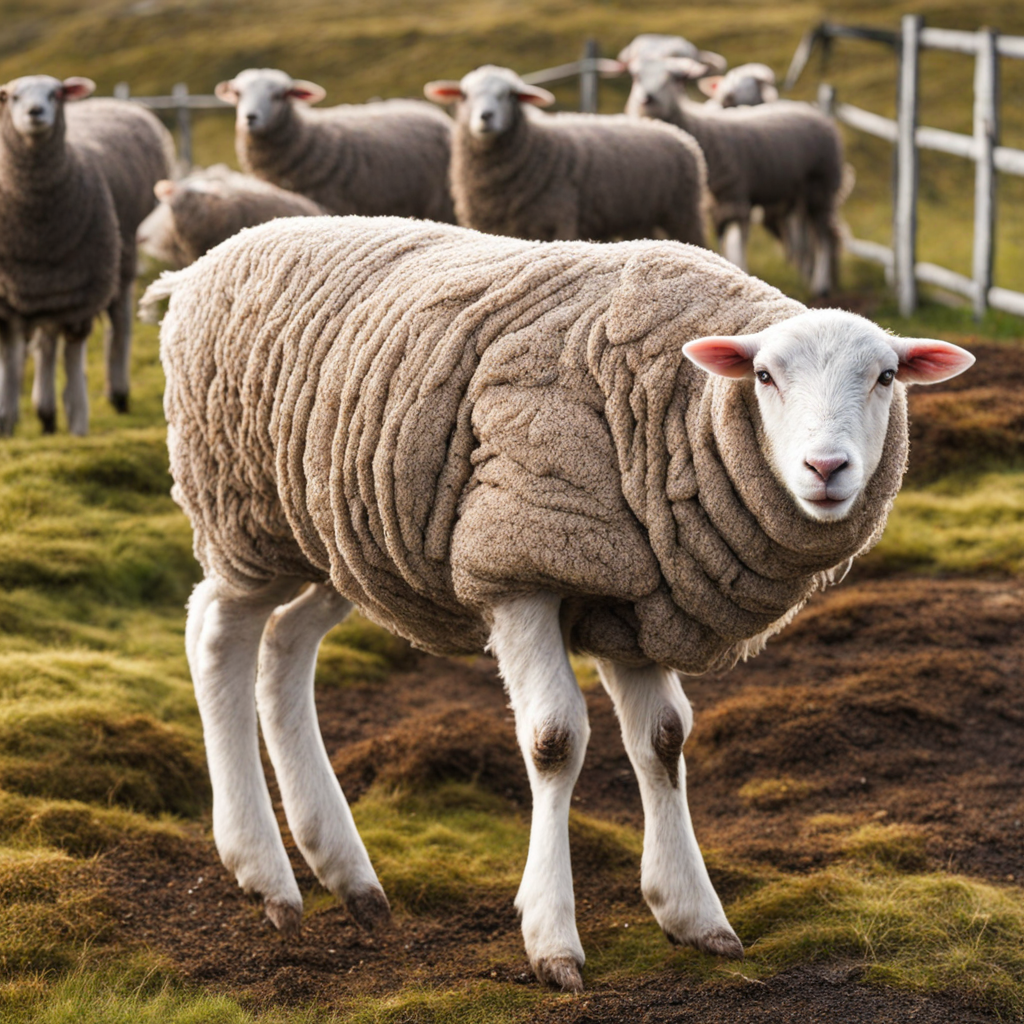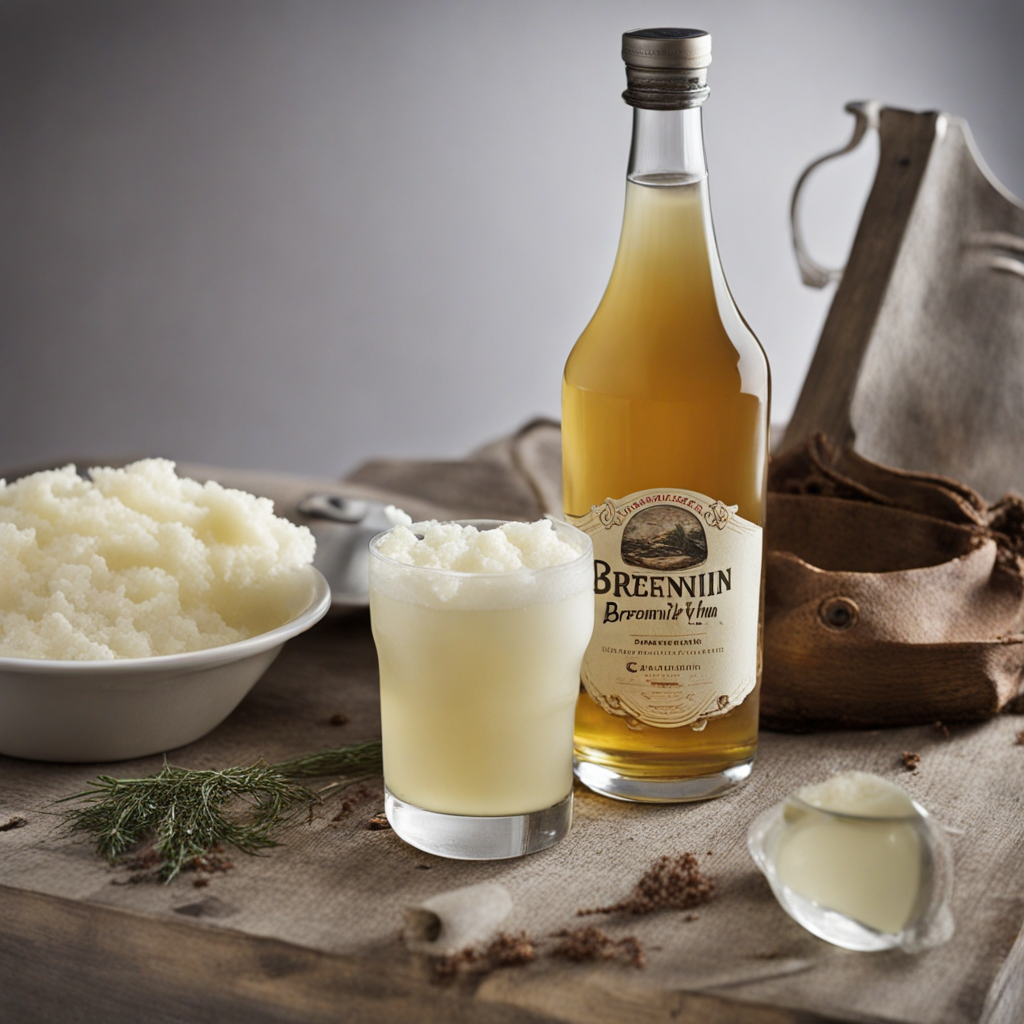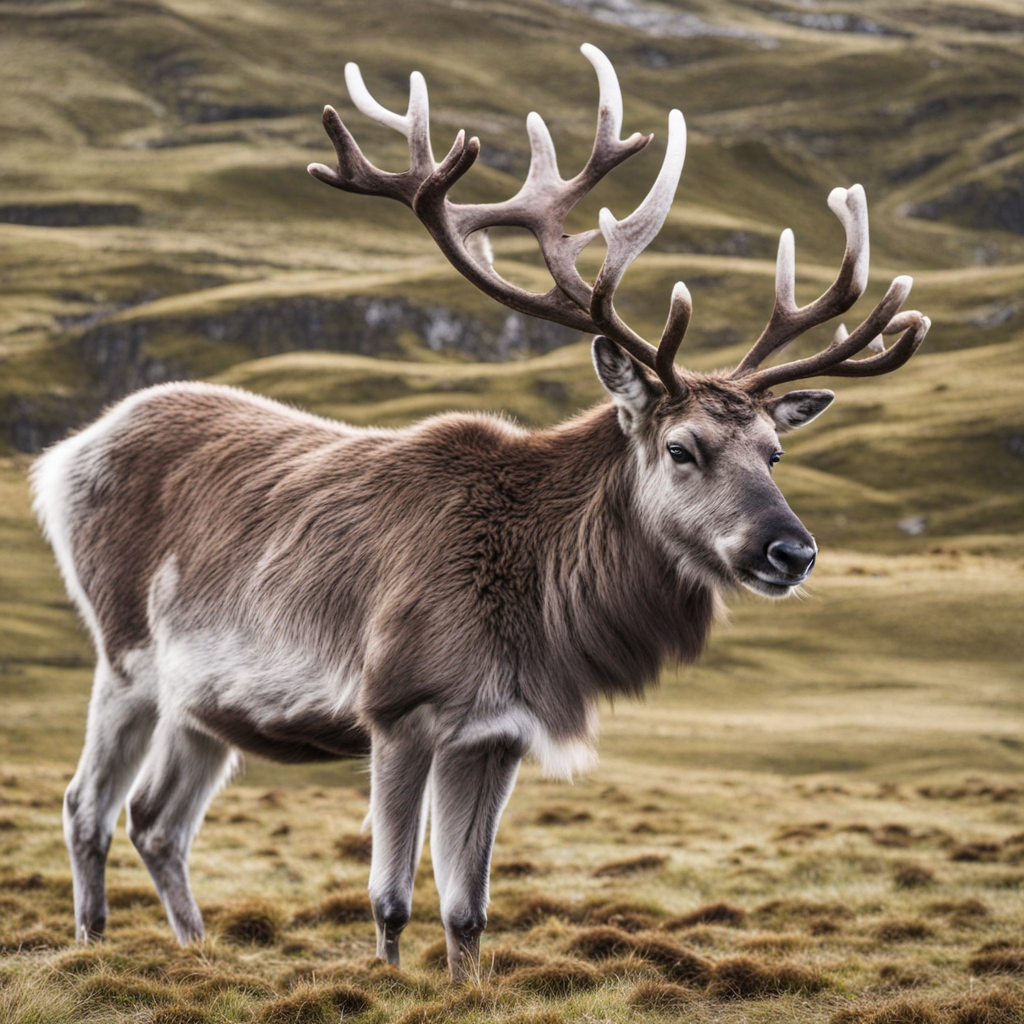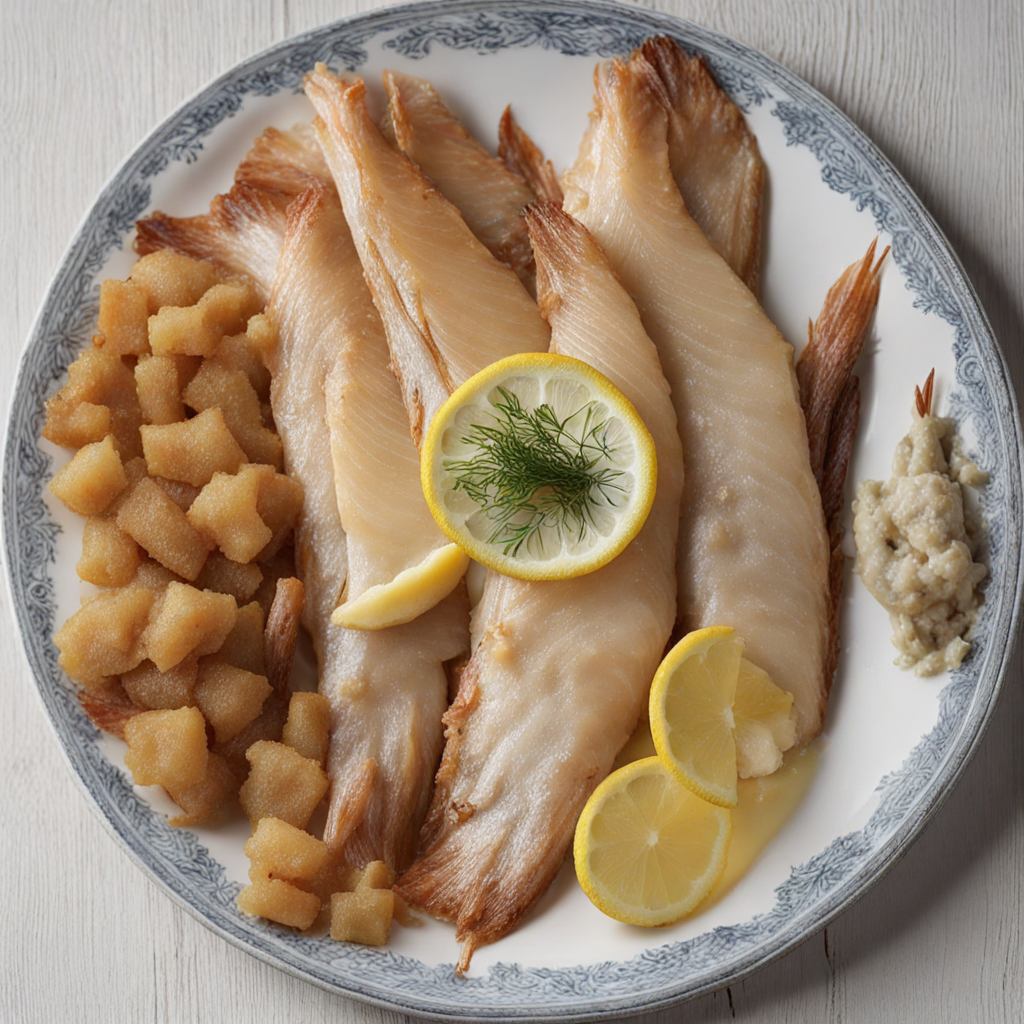Lambakjöt
Lambakjöt, a traditional Icelandic dish, showcases the unique flavors of lamb raised in the pristine landscapes of the country. The meat is known for its rich, robust taste, influenced by the sheep's natural diet of wild herbs, grasses, and seaweeds. This results in a distinctively tender and flavorful meat that is often prepared with minimal seasoning to allow its natural qualities to shine through. The preparation methods often include slow-roasting or braising, which enhances its tenderness and infuses it with aromatic herbs and spices common in Icelandic cuisine. Served in various forms, Lambakjöt can be enjoyed as hearty stews, where it mingles with root vegetables like potatoes, carrots, and turnips, absorbing their flavors while creating a comforting dish perfect for cold weather. Alternatively, it can be sliced and grilled, allowing the meat's natural juices to caramelize, resulting in a crispy exterior that contrasts beautifully with the juicy interior. Often accompanied by traditional sides such as pickled cabbage or creamy sauces, each bite offers a delightful blend of textures and tastes that reflect the rugged Icelandic terrain. For those seeking a culinary adventure, Lambakjöt represents more than just a meal; it embodies the essence of Icelandic culture and heritage. It invites diners to savor the connection between the land and the food, with each dish telling a story of the island's unique farming practices and the natural environment. Whether enjoyed in a cozy local eatery or prepared at home, Lambakjöt promises a memorable experience that highlights the beauty of Iceland's gastronomy.
How It Became This Dish
Origin of Lambakjöt Lambakjöt, a traditional Icelandic dish, primarily consists of lamb meat, which has been a staple protein source for Icelanders for centuries. The origins of this dish can be traced back to the Viking Age when Norse settlers first arrived on the island around the late 9th century. The harsh climate and the island's geographical isolation compelled these early settlers to adopt a pastoral lifestyle, raising sheep as their primary livestock. Sheep were well-suited to the rugged terrain and provided wool, milk, and meat for sustenance. Iceland's unique environment—characterized by volcanic soil, geothermal activity, and long, harsh winters—shaped the way lamb was raised and prepared. The sheep were allowed to roam freely during the summer months, grazing on wild herbs and grasses, which gave the meat a distinctive flavor. This natural diet, combined with traditional farming practices, led to the development of the lamb's rich taste and tender texture, which would become hallmarks of Lambakjöt. Cultural Significance Lambakjöt is more than just a meal; it is a significant part of Icelandic cultural heritage. The dish embodies the resourcefulness and resilience of the Icelandic people, who have historically relied on locally sourced ingredients to sustain themselves. In ancient times, lamb was often prepared during special occasions and festivals, highlighting its role in community gatherings and celebrations. The preparation methods and recipes were passed down through generations, linking families to their ancestry and cultural identity. During the long, dark winters, lamb was an essential source of nourishment. Traditional preservation techniques, such as smoking, salting, and drying, were developed to ensure that meat could be stored and consumed throughout the year. This practice not only reflects the necessity of food preservation in a challenging climate but also emphasizes the importance of lamb in maintaining the Icelandic way of life. Today, Lambakjöt continues to be enjoyed during holidays and family feasts, such as Þorrablót, a midwinter festival where various traditional foods are celebrated. Preparation and Cooking Techniques The preparation of Lambakjöt involves a variety of cooking techniques that highlight the dish's rustic roots. Traditionally, lamb is boiled or roasted, often with root vegetables such as potatoes, carrots, and turnips. The boiling method is particularly significant, as it allows the flavors to meld and creates a hearty broth that can be enjoyed as a soup. Roasting, on the other hand, produces a crispy exterior while keeping the meat tender and juicy. Icelanders also employ a unique method called "hangikjöt," where the lamb is smoked and then cooked. This technique not only enhances the flavor but also preserves the meat for longer periods. The smoked lamb is often served cold, sliced thinly, and accompanied by flatbread, butter, and pickled vegetables, making it a popular choice for open-faced sandwiches. The versatility of lamb in Icelandic cuisine is evident as it can be incorporated into a variety of dishes, from stews to casseroles, showcasing the adaptability of this beloved ingredient. Modern Development In recent years, the popularity of Lambakjöt has seen a resurgence, driven by a growing interest in traditional Icelandic cuisine and a focus on sustainable, locally sourced ingredients. As Icelandic chefs and home cooks alike embrace their culinary heritage, Lambakjöt has found its way onto menus in restaurants across the country, often with modern twists that reflect contemporary culinary trends. Chefs are experimenting with new flavors and presentation styles while still honoring the traditional preparation methods. Furthermore, the rise of farm-to-table dining practices has put Icelandic lamb in the spotlight. Its unique flavor profile, attributed to the sheep's natural grazing habits, has garnered attention both locally and internationally. Icelandic lamb has been recognized for its quality, and the country's commitment to sustainable farming practices has made it a desirable choice for conscientious consumers. This renewed appreciation for Lambakjöt has solidified its status as a culinary staple, bridging the gap between the past and the present. Global Influence and Recognition As the world becomes more interconnected, Icelandic cuisine—and Lambakjöt in particular—has begun to gain recognition beyond its borders. Food enthusiasts and culinary travelers seek authentic experiences, leading to an increased interest in traditional Icelandic foods. This global curiosity has encouraged chefs to showcase Lambakjöt in international culinary festivals and events, promoting Iceland's rich food culture. Moreover, the rise of social media and food blogging has allowed individuals to share their experiences with Lambakjöt, further amplifying its appeal. Recipes and cooking tips are shared across platforms, encouraging home cooks worldwide to engage with this dish. As a result, Lambakjöt is not just a local delicacy anymore; it has become a symbol of Icelandic culinary heritage that resonates with food lovers globally. Conclusion The history of Lambakjöt is a testament to Iceland's rich culinary tradition and the enduring bond between its people and the land. From its Viking origins to its modern-day interpretations, Lambakjöt encapsulates the resilience, resourcefulness, and cultural significance of Icelandic cuisine. As it continues to evolve and adapt in a changing world, Lambakjöt remains a cherished dish that connects generations, celebrates Iceland's natural bounty, and invites diners to experience the flavors of the island's unique heritage.
You may like
Discover local flavors from Iceland


